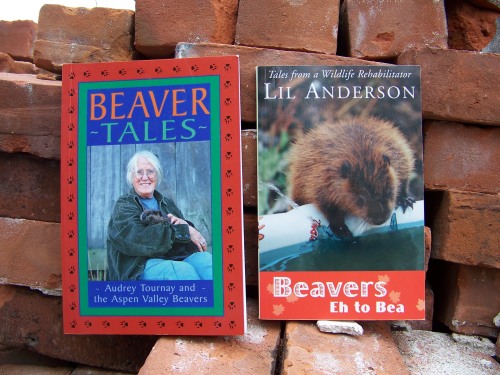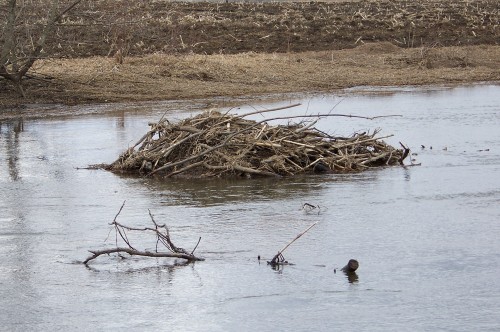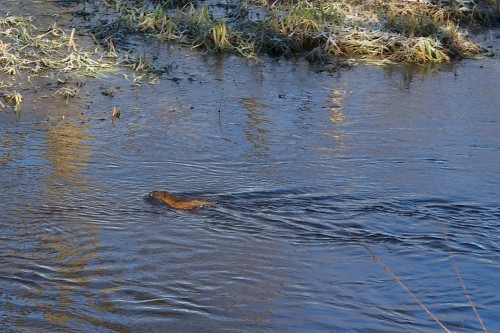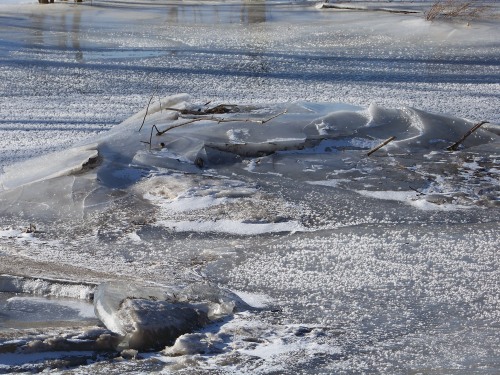
As noted earlier in the week, the November full moon is also known as the Beaver Moon. Sure enough, when we visited Upper Canada Bird Sanctuary, there was evidence that beavers (Castor canadensis) had recently been hard at work, getting ready for winter.

Not far from the entrance to the trail, a beaver lodge was nearing completion. Beavers are well known for building dams. However, they only construct dams if it is necessary in order to maintain the water level at a depth sufficient to ensure that the bottom of the waterway won’t freeze. This is required in order to provide underwater storage for winter food and year-round underwater access to the lodge, secure from predators.
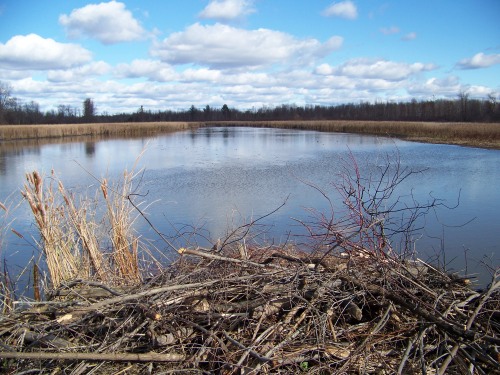
The lodge may be located in the middle of a pond, or on the bank of a waterway, as in this case. Lodges are usually built over about a month in the autumn. The lodge includes a feeding den, a resting den, a source of fresh air, and usually more than one underwater tunnel, which allows for a means of escape should a predator enter the lodge through one of the tunnels.

The lodge is constructed from a pile of twigs, branches and bark. As freezing weather begins, the beavers use their front paws to plaster the lodge with mud, leaving an air intake near the top of the lodge. This makes a concrete-like outer shell that predators can’t break through. Inside, the dens are constructed on a platform about 10 centimetres above the water line. They are created by gnawing out space in the pile of branches. The average lodge is about 5 metres in diameter and about 2 metres high. The lodge may be occupied for many years. In winter, it may be home to a pair of adults, their yearling kits and the young of the year.

Most of the branches used in the construction of the lodge were small in diameter. On average, a beaver cuts down about 215 small trees (under 40 cm in diameter) a year. These beavers had to bring the branches from quite a distance, as the lodge was located well away from the edge of the forest. There were multiple trails through the cattails at the edge of the water.

Perhaps it was this long trip to drag branches back that inspired the beavers to try taking down one of the larger trees closer to their lodge. It was an ambitious undertaking, still in progress! If you would like to read more about beavers, visit Bibliophilia Monday: Two About Beavers for a couple of suggested titles.

